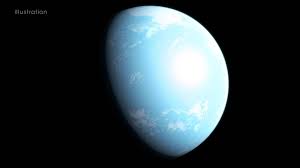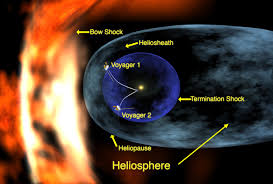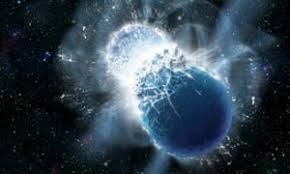Top 9 of 2019: Astronomical Discoveries and Exploits
January 13, 2020
The year 2019: a gateway into a new decade and a year of astounding achievements in the field of astronomy. Many groundbreaking events have happened. The following are the top 9 astronomical exploits and discoveries in 2019.
9. 20 new moons discovered on Saturn

The ninth most significant event is the 20 new moons discovered on Saturn. This would bring the moon to count on Saturn higher than Jupiter’s moon count. It also gives us insight into how moons emerge from a primordial environment since Saturn’s rings contain a lot of debris that could potentially form moons.
8. three earth sized exoplanets discovered 12 lightyears away

The eighth most significant astronomical discovery is that three earth-sized exoplanets were discovered 12 lightyears away, potentially in the habitable zone of their host stars. If humanity were to colonize other solar systems, they would be a good starting point.
7. longest supernova in history ended

The seventh most significant astronomical discovery is that the longest supernova so far in human history, lasting over 800 days, ending in the year 2019. A star of unfathomable size must have exploded, and in such a way that the whole star was destroyed. Nothing was left behind, not a neutron star, or a black hole, typical of stars of that size. This could prove to scientists that the most massive stars die leaving nothing behind.
6. Chinese government grew cotton on moon

The sixth most significant astronomical exploit is the Chinese government growing cotton on the backside of the moon in the project Chang’e 4. This was the first plant ever recorded to germinate on a different planet. What makes this operation difficult is the positioning on the moon. This requires a facility orbiting the moon to receive a signal when not behind the moon and transmit instructions to the lander that is positioned on the backside of the moon. The moon is tidally locked, which means that one side of the moon always faces the Earth and the other side almost never points towards the earth.
5. picture of the universe consisting of 26500 visible galaxies

The fifth most significant astronomical exploit is humanity finally compiling a picture of the universe consisting of 26500 visible galaxies, forming a complete picture of the deep space area surrounding earth. See the image above to observe what 16 years of effort by the Hubble space telescope have given us.
4. discovery of the heliosphere

Number three is the third event confirming the existence of gravitational waves, also known as ripples in the spacetime continuum. When neutron stars or black holes collide and combine with each other, they send out gravitational waves. First theorized by Einstein in 1915, they were first detected in 2015. This collision of a black hole and a neutron star 100 billion light-years away might be the third event confirming the existence of gravitational waves.
3. 3rd event confirming gravitational waves

Number three is the third event confirming the existence of gravitational waves, also known as ripples in the spacetime continuum. When neutron stars or black holes collide and combine with each other, they send out gravitational waves. First theorized by Einstein in 1915, they were first detected in 2015. This collision of a black hole and a neutron star 100 billion light-years away might be the third event confirming the existence of gravitational waves.
2. organic matter found on Saturn moon Enceladus

The second most significant astronomical discovery is that organic matter was found on the Saturn moon Enceladus. This could support alien life, and make extraterrestrial life more common than it would seem. The organic compounds dissolved in Enceladus’s oceans below its surface, which could start deep-sea reactions that begin the production of amino acids, the first step to developing life on a planet.
1. black hole image captured

The most significant astronomical exploit is finally taking a picture of a black hole. The Event Horizon Telescope captured an image of a black hole at the center of galaxy M87, also known as Virgo A. Because a black hole absorbs all light that goes to this object, the only way to take a picture of it is to take note of the light surrounding this object. To be able to take a picture of that quality was truly a herculean endeavor by scientists.
Those were the top 9 astronomical exploits and discoveries in 2019, a revolutionary year for scientists. Both theoretical and technological fields were advanced, allowing humanity to delve deeper into the mystery of the stars.






